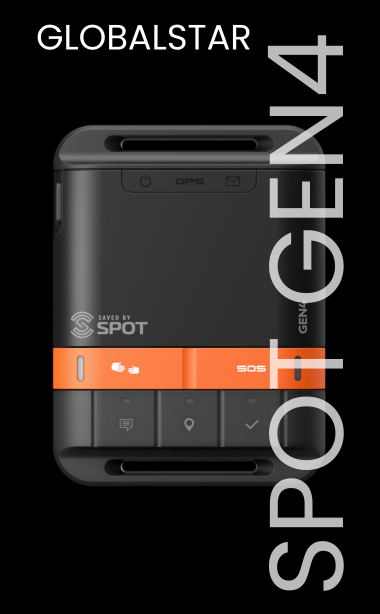You have no items in your shopping cart.
Having a disaster plancould save your family!
Not becoming a victim of a natural disaster usually means beingprepared and ready to take care of yourself and your family. Here are three areas you need to consider in order to create an effective disaster plan:
- Build aDisaster Kit
- Maintain aFamilyCheck Listof things to do both in the short time before the disaster hits and then during it.
- BuildaSafe Roomin your house capable of surviving high winds.
Thedisaster kit -- an essential part of every effective disaster plan
Yourdisaster plan should always includeaportable waterproof disaster kit with critical and hard-to-find items that you may need to survive a disaster. If you are forced to movein a hurry, you must be able to take your disaster kit with you. The disaster kit's contents also may need to protected fromrain or flood waters. It is generally better to have several smaller waterproof containers rather than a single large one. Here are some items to put in the disaster kit:
PORTABLE WATERPROOF CONTAINERS
Cheap plastic containers are available in most stores, butimagine what would happen if you had to move thecontainers after they were loaded. Would they break or open up? Here are some types of waterproof containers that are effective for Disaster Kits:
- APelican Caseis a good choice to protect water-sensitive items.
- Dry bags are available from stores with hiking or kayaking supplies.
- If you have a rucksack, waterproof liner are available.
- Ziplock bags come in a wide variety of sizes.
ELECTRONIC DEVICES NEEDED FOR YOURDISASTER PLAN
Asatellite hotspotlike the Iridium GO! Hotspotis more reliable than a cellular phone because certain types of natural disasters likehurricanes and earthquakes can disable cellular towers over a wide region. The Iridium GO! hotspot works with your iOS or Android smart phone or tablet to assure that you can make and receive phone calls, texts and email.
- A couple walkie talkies.
- LED Flashlight with USB-rechargeable batteries.
- NOAA weather radio with rechargeable batteries
- Portablesolar recharging systemwith a battery pack with both a USB output and a 12 VDC output.
FOOD OPTIONSFOR YOURDISASTER PLAN
- You should have at least aone week food supplyfor your family comprised of non-perishable items like Peanut Butter, Crackers, Canned Foods, salt, pepper, energy bars...
- Three or four one quart plastic water bottles (stored empty)
- Metal pot for preparing food and boiling water
- Water purification tablets
- Fifty10"x12" reclose-able ziplock bagsdon't take up much space and are very useful.
- Non-electric can opener
- Camping stove with fuel
- Hunting knife
- Utensils like forks and spoons
- Sanitary napkins
SHELTER TOOLSFOR YOURDISASTER PLAN
- Blankets
- Bug spray and sunscreen lotion
- Waterproof plastic tarp
- Nylon cord or rope
HYGIENE AND HEALTHISSUES TO CONSIDER IN YOUR DISASTER PLAN
- It might be said, civilization started when toilet paper was invented. If you don't believe me, consider life without it. Make sure you have toilet paper. Its light, doubles as packing material and well its just a necessary part of your disaster plan.
- If you have infants you also need diapers in your disaster kit.
- Sanitary napkins
- Fingernail clippers
- Vaseline petroleum jelly
- Household bleach (2 pints) for disinfecting purposes
- Human waste disposal is critical to control disease. Public sewers can fail during natural disasters. Here is what we suggest for your disaster plan. Get a5-gallon bucket with a tight fitting lid that can be used asa toilet. An additional 10-gallon garbage can with a tight fitting lid lined with a plastic bag can be used tostore human waste.
- A simplemedical emergency kitis a good part of a disaster plan too. The link gives a list of items you should have.
Family check list-- an essential part of every effective disaster plan
A tornado or earthquake may come without warning. Other natural disasters like hurricanes may give you hours or days to prepare. Just in case you don't have much time to think through your next actions, a check list of critical items can help you coordinate your family's efforts in the limited time available. Here are some things to consider:
- Fill the water bottles in your disaster kit. Every person in your group needs 1 gallon a day. Prepare enough potable water for 7 to 10 days. Floods, hurricanes, and earthquakes can disable municipal water distribution systems or make the water from them unsafe to use.
- Verify you have all your prescription medications in their original bottles.
- Add more imperishablefood to your Natural Disaster Kit, e.g. raisins, potato chips,beef jerkyand canned food. If you have an infant, make sure you have appropriate foods for the child.
- Make sure your emergency contact list is up to date. You should have contact information for family members and friends. Also, have contact information for police, fire and medical emergency organizations. Make sure that even your children know where this emergency contact list is and how to use it.
- Verify you have new and spare batteries for all flashlights.
- Make sure you have cash, a social security card, and a personal photo ID card. During a crisis, ID may be required to return to your home if you leave it.
- Make sure your car is fully fueled and you know where the keys are.
- Make sure your boat is fully fueled and you know where the keys are-- in case you need it for your exit in a flood.
- Make sure you have pet food and a carry cage or leash to control pets.
- In the event of a hurricane, you can prepare your home for high winds by boarding up windows and gathering up items like bicycles, patio furniture and garbage cans that might blow away.
- Put a bag of ice or two in your refrigerators and freezers to extend the length of time they stay cold. This will prevent food spoilage.
- Get the mail out of the mailbox.
- Assign someone -- in the event of power failures -- to turn off all the circuit breakers except the ones running critical systems like refrigerators and a few lights in the interior of the house. This will reduce the load on your community's electrical power grid. If everyone does this it will help your power company recover after the disaster.
Safe rooms-- for thedisaster plan that has everything else
Some people thinksafe rooms are simply to protect againsthome invasions. A well-designed safe room can also protect you in the event of high winds ortornados. Tornados often give little advanced warning. Your family needs shelter near your home. Here are some considerations:
Configure your safe room to be used with aportable generator. It is not a good idea to store it outside since generatorscan be stolen easily, but when you actually deploy it, it should be outside. Never run a generator inside a confined space. The exhaust is toxic.
- Assuring that you have communications is important. Cellular networks are prone tofail during a hurricane or earthquake. A better choice is asatellite phone in a docking stationwith an external antenna mounted on the building. If you have to bug out, the handheld satellite phone can be taken out of the dock.
- Keep a tool box in your safe room. In addition to standard tools like screw drivers, it is a good idea to have an ax or sledge hammer. If your house collapses and you need to exit your safe room, the ax or sledge hammer could be a life saver.
- A water storage and treatment system. Each person staying in the safe room will need about 1 gallon a day. If you plan on a 7 day disaster, then that is at least 7 gallons x number of people in your group.
- In the old days, most families had a root cellar or cold room in which they stored canned goods. Use your safe room to store canned goods and non-perishable items. That assures you will have adequate food during the natural disaster.
- Keep important documents in a fireproof safe in the safe room, e.g. copies of insurance and medical records, bank account information, copies of your birth certificate,...
#NoCellService
 English
English











